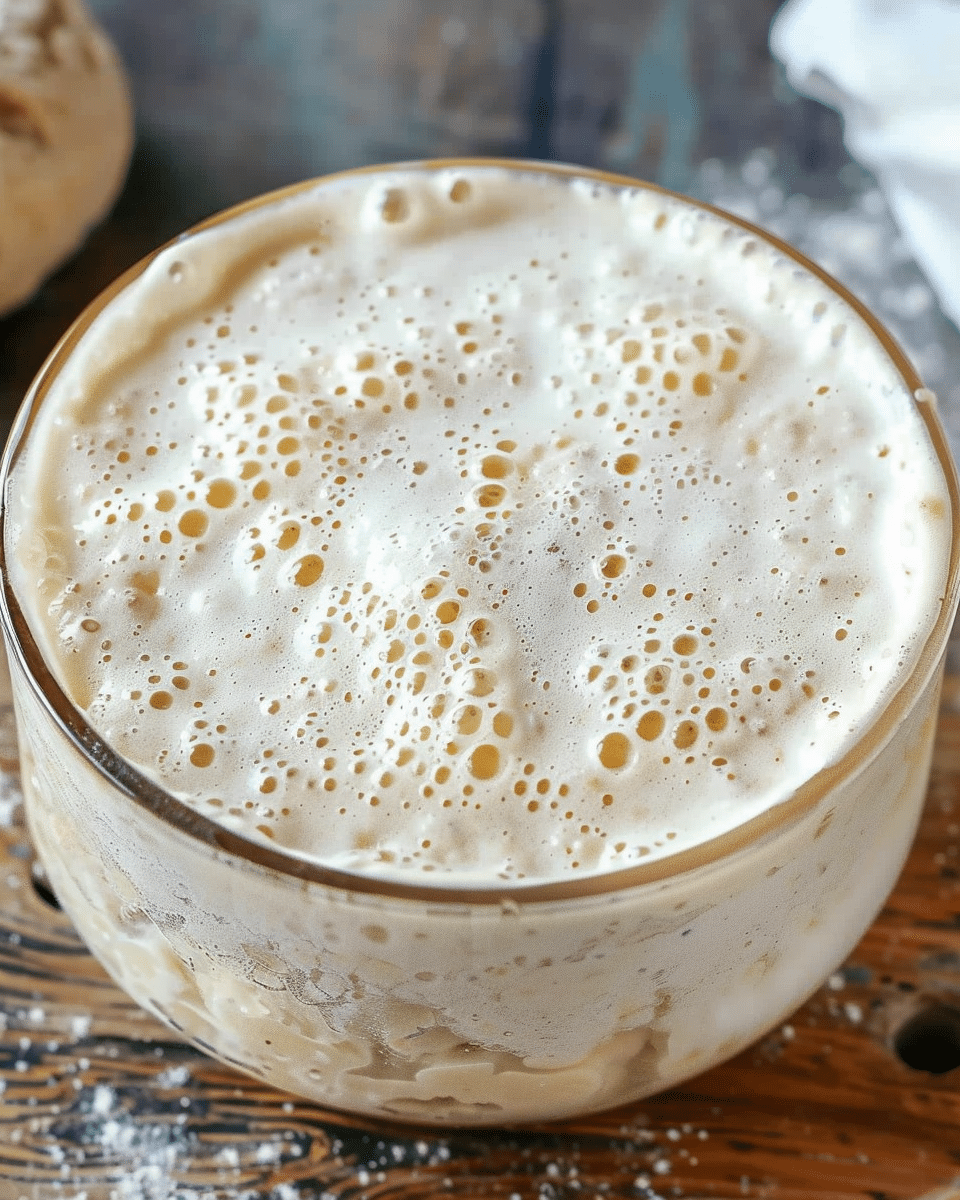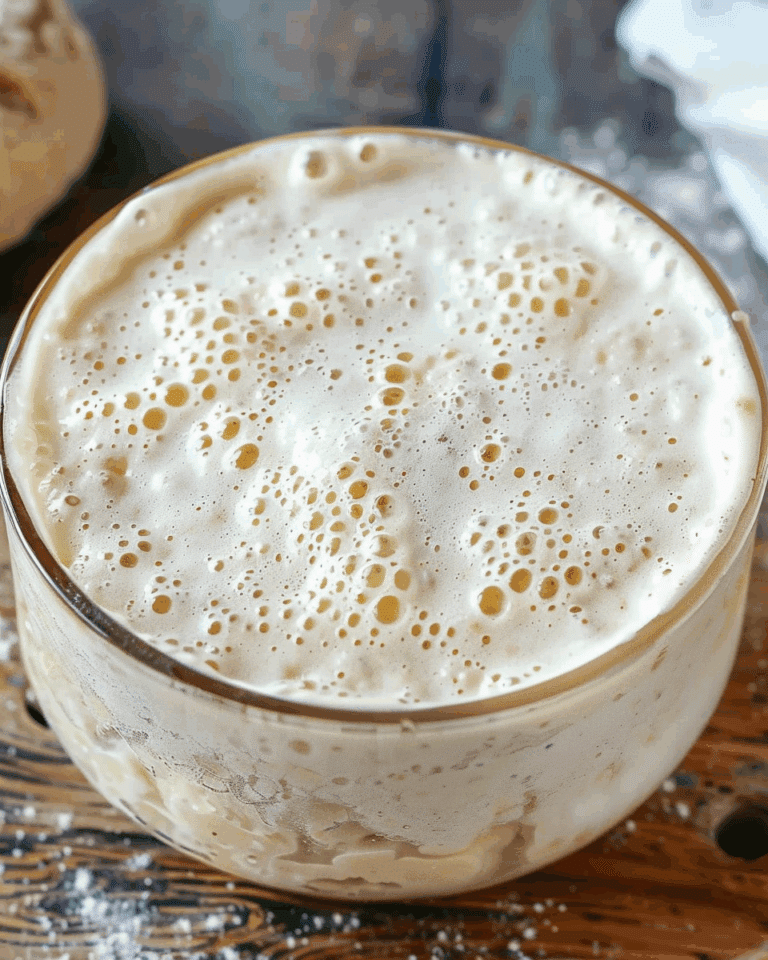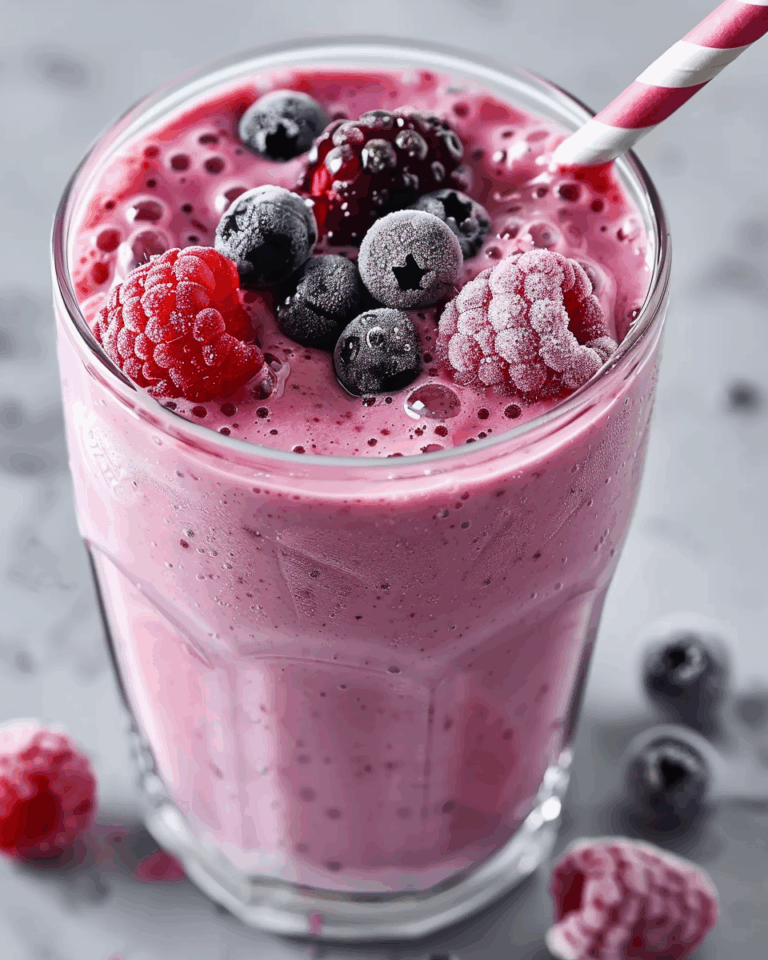Why You’ll Love This Recipe
This sourdough starter recipe is simple, reliable, and doesn’t require any special equipment beyond basic kitchen tools. You’ll love how straightforward the process is, and how it helps you create a strong starter to bake delicious, homemade bread. Plus, the starter becomes more robust with each feeding, giving you the flexibility to make tangy, flavorful sourdough bread anytime. It’s perfect for beginners, but even experienced bakers will appreciate the ease and consistency of this method.

Ingredients
-
6 cups (720 g) organic all-purpose flour
-
3 cups (360 g) organic whole wheat flour
-
Water
(Tip: You’ll find the full list of ingredients and measurements in the recipe card below.)
Directions
-
Prepare the Flour Mixture: Mix 6 cups of all-purpose flour with 3 cups of whole wheat flour and store it in an air-tight container. This is the flour you’ll use to feed your starter throughout the process.
-
Day 1: In a clean jar, combine 1 cup of flour and ½ cup of water (120g flour + 120g water). Stir thoroughly until fully incorporated. Cover the jar with a lid or breathable cloth, securing it with a rubber band. Let the mixture rest in a warm location (around 75°F or 24°C) for 24 hours.
-
Day 2: Stir the starter mixture gently to incorporate air. Cover the jar again and let it rest for another 24 hours in the same warm spot.
-
Days 3-7: Every 24 hours, discard all but 2 tablespoons of the starter. Feed it with ½ cup of fresh flour and ¼ cup of water (60g flour + 60g water). Stir well to combine, and repeat this daily feeding process for about 7 to 10 days. You should start seeing bubbles and your starter will begin to double in size within 4-12 hours of each feeding.
Tip for a sluggish starter: If your starter seems slow to develop after day 4, try stirring in 2 tablespoons of flour and 2 teaspoons of water into the starter 12 hours after feeding. This extra boost can help revitalize a sluggish starter.
-
Next Steps: Once your starter is active and bubbly, continue feeding it daily for the first two weeks. This will help your starter mature and become even stronger, ensuring a robust starter for all your sourdough baking needs.
Servings and Timing
-
Prep Time: 5 minutes
-
Fermentation Time: 7 days (with daily feedings and some patience)
-
Total Time: Around 7-10 days, depending on the activity of the starter
Variations
-
Flour Alternatives: While this recipe uses a blend of all-purpose and whole wheat flour, you can experiment with different types of flour, such as rye or spelt. These flours may give your starter different flavors and textures.
-
Gluten-Free Starter: If you need a gluten-free starter, you can substitute regular flour with gluten-free flour blends (though the process may take longer to achieve the same level of activity).
Storage/Reheating
-
Storing Your Starter: After the first few days, you can store your starter in the fridge once it’s fully established. Make sure to feed it at least once a week if you’re not using it regularly.
-
Reheating/Reviving: If you’ve stored your starter in the fridge, allow it to warm up at room temperature before feeding it again. If it seems inactive, feed it for a few days to bring it back to full strength.
FAQs
1. How long does it take to make a sourdough starter?
It takes about 7-10 days to fully develop a sourdough starter, depending on the temperature and environment.
2. Why is my sourdough starter not bubbling?
If your starter isn’t bubbling, it could be due to too cold of a temperature, lack of feeding, or using inactive flour. Make sure it’s in a warm spot and feed it regularly.
3. Can I use tap water for my starter?
Yes, you can use tap water, but ensure it’s chlorine-free. Chlorine can inhibit the growth of yeast and bacteria, which is crucial for your starter.
4. How often should I feed my sourdough starter?
Feed your starter once a day for the first week. After it’s established, you can feed it every 2-3 days or keep it in the fridge and feed it weekly.
5. Can I make a starter with just all-purpose flour?
Yes, you can make a starter with just all-purpose flour, though whole wheat or rye flour tends to speed up the fermentation process due to its higher nutrient content.
6. How do I know when my starter is ready to bake with?
Your starter is ready when it doubles in size within 4-12 hours of feeding, and it has lots of bubbles, indicating that it is active and healthy.
7. Can I skip the discarding step?
While discarding some of the starter helps keep the mixture balanced and ensures it doesn’t grow out of control, it’s not strictly necessary. However, skipping this step can lead to an overly large amount of starter.
8. What should I do if my starter smells bad?
A sour smell is normal, but if your starter smells rancid or like rotten food, it may have developed mold or gone bad. Try discarding the problematic portion and feeding it with fresh flour and water.
9. How do I maintain my sourdough starter long-term?
To maintain a sourdough starter, continue to feed it regularly, either daily or weekly depending on its storage. Always use clean utensils to avoid contamination.
10. Can I freeze my sourdough starter?
Yes, you can freeze a sourdough starter for long-term storage. Before using it again, thaw it and then feed it for a few days to reactivate it.
Conclusion
Creating your own sourdough starter doesn’t need to be complicated, and this beginner-friendly recipe is a great way to get started. With simple ingredients, daily feedings, and a little patience, you can develop a robust and bubbly starter that will give you the foundation for delicious homemade sourdough bread. Keep practicing, and soon you’ll be enjoying the fruits of your labor in the form of perfect loaves straight from your own kitchen!

Beginner Sourdough Starter
5 Stars 4 Stars 3 Stars 2 Stars 1 Star
No reviews
A beginner-friendly sourdough starter recipe that makes it easy to grow a vibrant and active starter in just a week, perfect for sourdough bread baking.
- Total Time: 7-10 days
- Yield: 1 starter
Ingredients
6 cups (720 g) organic all-purpose flour
3 cups (360 g) organic whole wheat flour
Water
Instructions
- Prepare the Flour Mixture: Mix 6 cups of all-purpose flour with 3 cups of whole wheat flour and store it in an air-tight container. This will be used to feed your starter.
- Day 1: In a clean jar, combine 1 cup of flour and ½ cup of water (120g flour + 120g water). Stir thoroughly until fully incorporated. Cover the jar with a lid or breathable cloth and let it rest in a warm spot (around 75°F or 24°C) for 24 hours.
- Day 2: Stir the starter gently to incorporate air. Cover the jar again and let it rest for another 24 hours.
- Days 3-7: Every 24 hours, discard all but 2 tablespoons of the starter. Feed it with ½ cup of fresh flour and ¼ cup of water (60g flour + 60g water). Stir well and repeat daily for 7-10 days. Bubbles should appear and the starter will double in size within 4-12 hours of each feeding.
- If your starter is sluggish, stir in 2 tablespoons of flour and 2 teaspoons of water 12 hours after feeding to revitalize it.
- Once your starter is active and bubbly, continue daily feedings for the next two weeks to ensure it’s strong and ready for baking.
Notes
- Flour Alternatives: You can use different flours such as rye or spelt for a different flavor and texture.
- Gluten-Free Option: Substitute gluten-free flour blends for a gluten-free starter, though it may take longer to develop.
- Storage: Once established, store your starter in the fridge and feed it weekly if not in use.
- If storing in the fridge, allow your starter to warm up to room temperature before feeding it again.
- Author: Julia
- Prep Time: 5 minutes
- Cook Time: 0 minutes
- Category: Baking
- Method: Fermentation
- Cuisine: American
- Diet: Vegetarian
Nutrition
- Serving Size: 1 tablespoon
- Calories: 5
- Sugar: 0g
- Sodium: 0mg
- Fat: 0g
- Saturated Fat: 0g
- Unsaturated Fat: 0g
- Trans Fat: 0g
- Carbohydrates: 1g
- Fiber: 0g
- Protein: 0g
- Cholesterol: 0mg







